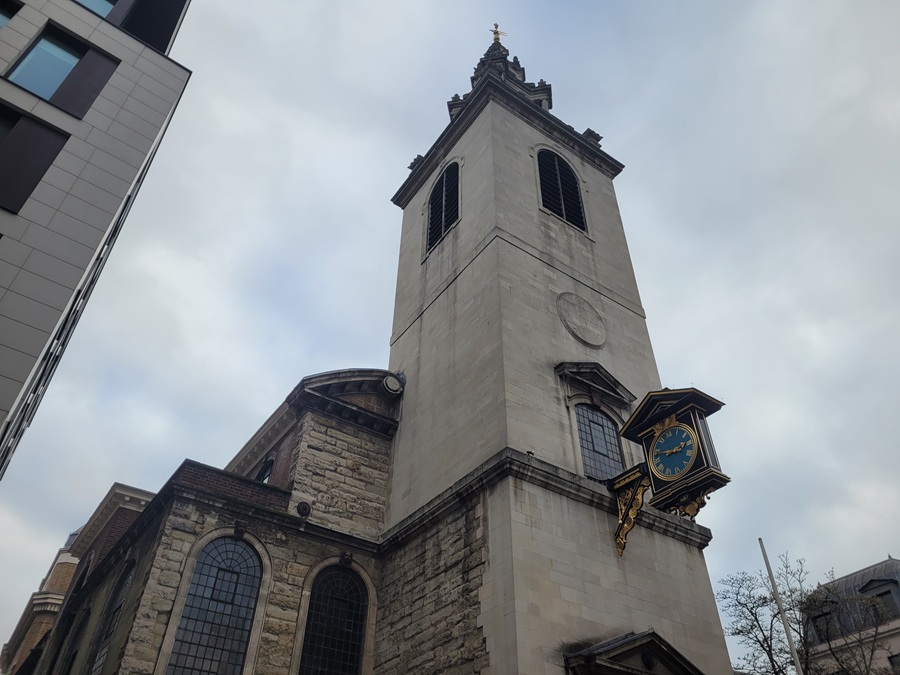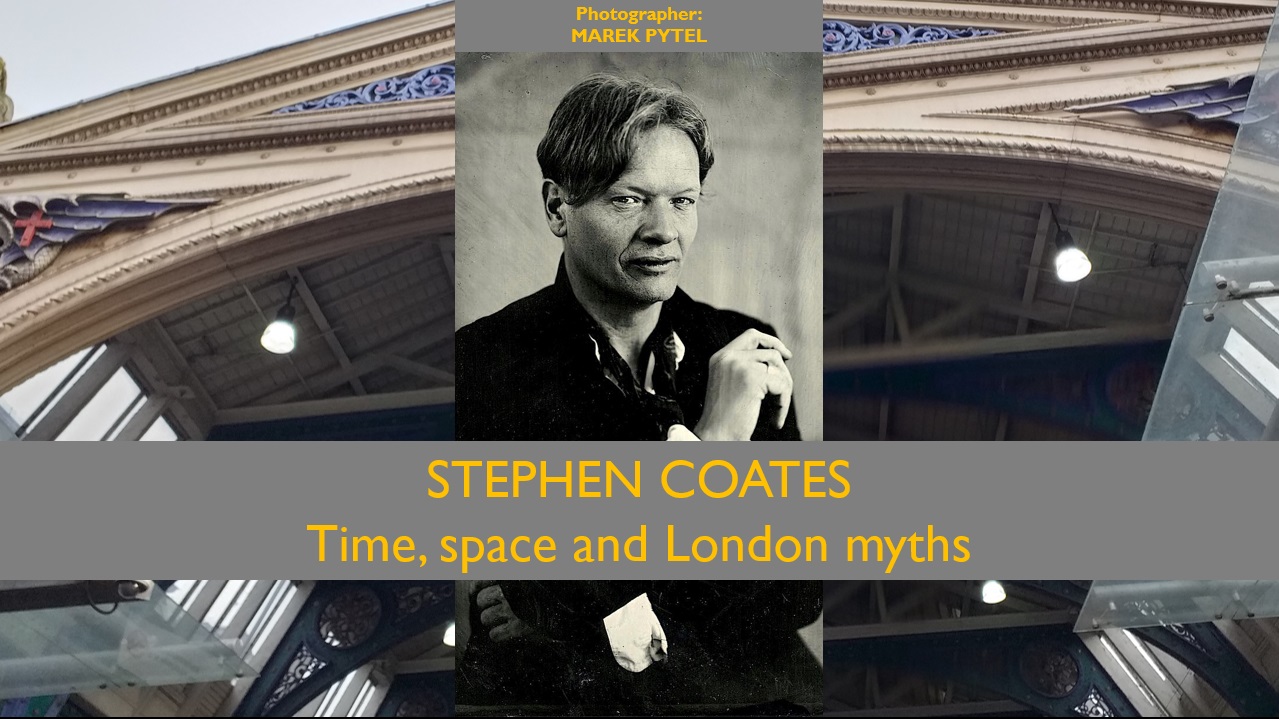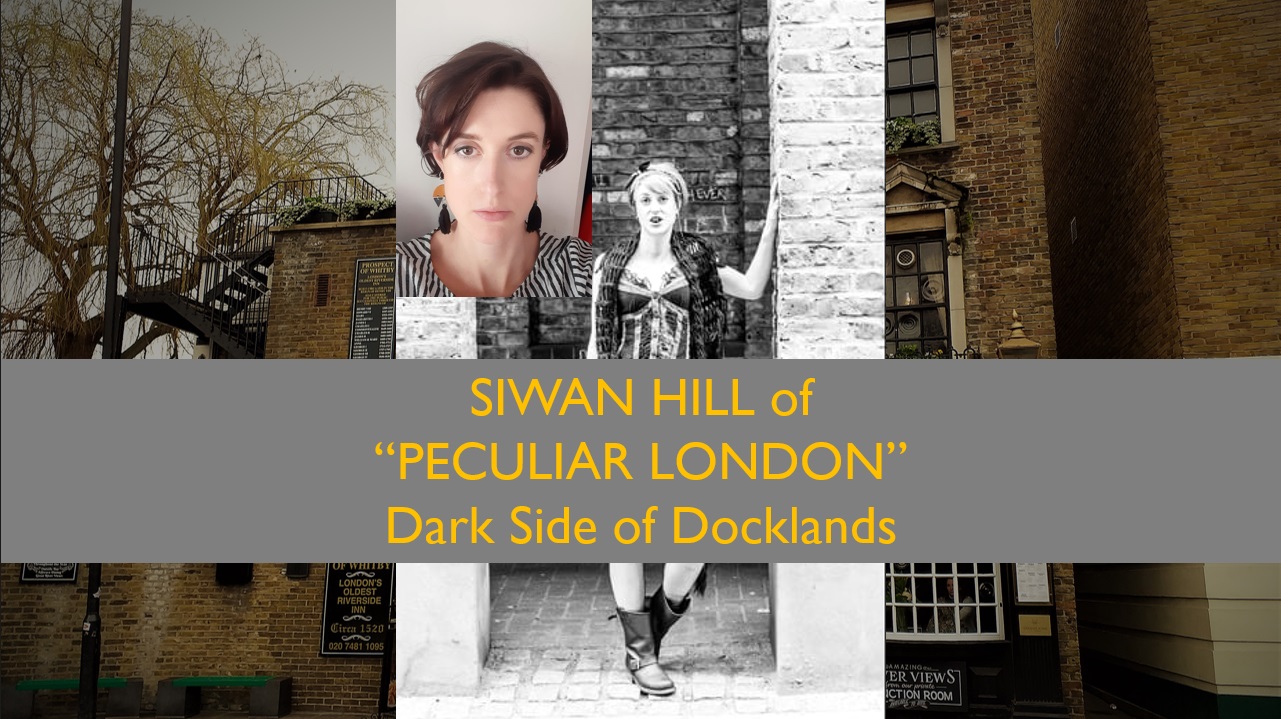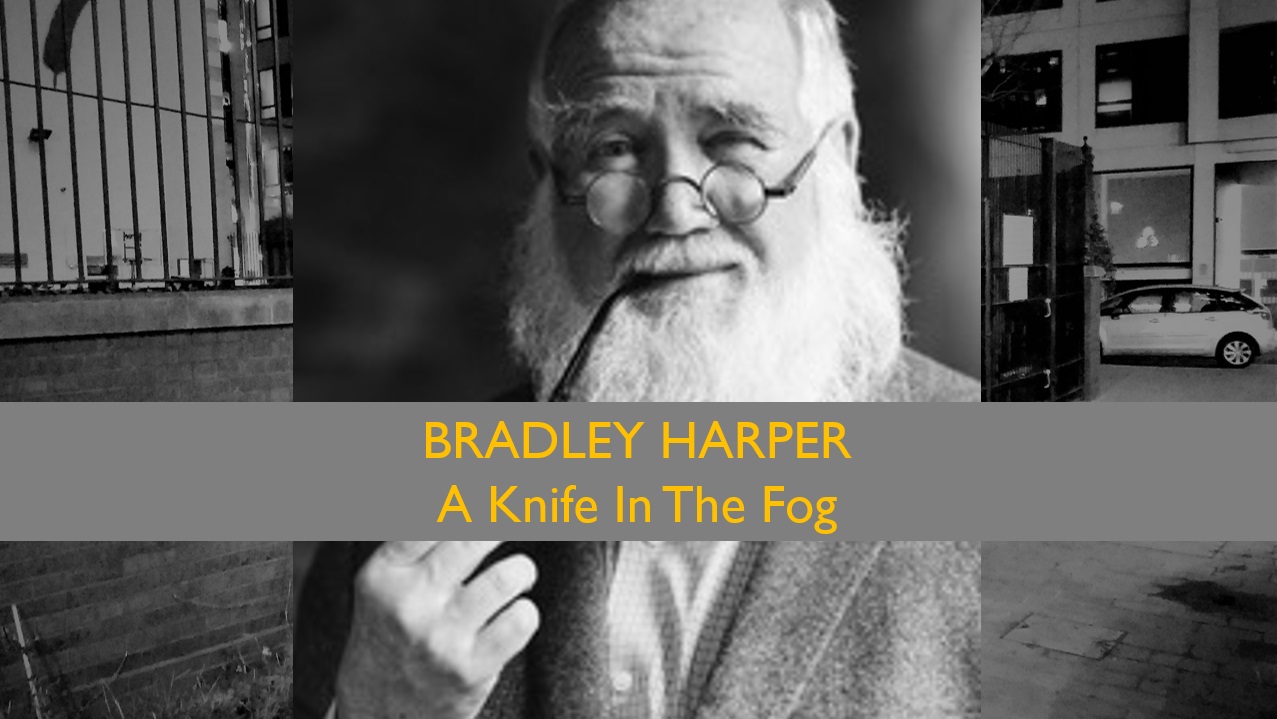by Dorothee Schröder
Garlick Hill is a short street (156 metres) in the City of London, running from the junction of Cannon Street and Queen Victoria Street in the north to Skinner’s Lane in the south, close to the River Thames. It dates back to the ninth century and takes its name from “Garlick Hythe,” a nearby wharf where garlic was once unloaded on a particularly large scale. Like most narrow streets in this part of the City, traffic on Garlick Hill is one-way, heading north.
The surrounding area is also known as Garlick Hill. It stretches from Bow Lane in the north to the Thames in the south, and from Basing Lane in the west to Turn Base Lane in the east. For more than a century, this district was one of the world’s most important trading centres for fur skins (the “smoke trade”). It was home to Beaver House, the principal auction house, for 23 years.
The poet Geoffrey Chaucer (c. 1343–1400) was born in this area, which at the time was populated by many merchants from Bordeaux, making both English and French common languages among its residents.
London’s pre-eminence in the fur trade was largely due to its naval supremacy, its colonial economy, the Hudson’s Bay Company, and the London rawhide auctions. As London merchant Francis Weiss recalled:
“The London fur trade reached the height of expansion in the inter-war period. The area, dominated by the smoke trade, stretched from the Lampson auction complex along the Thames, almost to the Tower and Blackfriars, Queen Street, Upper Thames Street, Queen Victoria Street, etc., and all the little alleyways and corners as far as St Paul’s Cathedral displayed the signs of more or less important fur dealers and commission agents. Closer to St Paul’s Cathedral, there were large clothing manufacturers, and in the East End hundreds of manufacturers and intermediate masters. Across the river in Dockland, many warehouses were also occupied by our industry.
In 1928, when the Hudson’s Bay Company opened the new auction room and Beaver House, the centre of gravity shifted somewhat to here and has remained so to this day [March 1979].”
— Francis Weiss: Der Exodus vom Knoblauchhügel
After the Second World War and the subsequent decline in fur sales in Europe, London lost its importance in the global fur trade. International business shifted to Denmark and China. Sales of London fur traders declined, and as property prices rose, companies gradually left Garlick Hill, particularly after the Hudson’s Bay Company closed the Beaver House auction rooms in 1982.
Garlick Hill was declared a Conservation Area in 1980, meaning that no building could be demolished without planning consent. Nevertheless, permission was granted in 1982 for the demolition of Beaver House. The site was redeveloped in the mid-1980s and is now occupied by the Royal Bank of Canada Centre. The complex consists of two interconnected office buildings, including an atrium that incorporates the original entrance façade of Beaver House.
Opposite the Royal Bank Centre, at the corner of Skinner’s Lane at the foot of Garlick Hill, stands the parish church of St James Garlickhythe. First mentioned around 1100, it was destroyed in the Great Fire of London and rebuilt in 1682. Apart from St Paul’s Cathedral, it has the highest ceiling in the City. The church is said to be haunted by the ghost of “Jimmy Garlick.” His mummified body was discovered in the vicar’s vault in 1855 and displayed in a glass case inside the church for many years. On Sundays, choirboys would reportedly place him in a pew, dressed in a ruff collar. During the Blitz, his corpse was shattered with glass due to a bomb very close, and since then the ghost of Jimmy Garlick is said to haunt the church, with several reported sightings.
Garlick Hill was also home to London’s first mustard factory, opened in 1742 by Keens & Sons. Today, Keens is a brand of McCormick Foods Australia Pty Ltd, the Australian branch of McCormick & Company, the world’s largest spice manufacturer.
Despite the demolition of many of its old houses, the area still carries the atmosphere of an important historic era in the heart of London.
Cover picture: St James Garlickhythe (Photograph: Philipp Röttgers)




